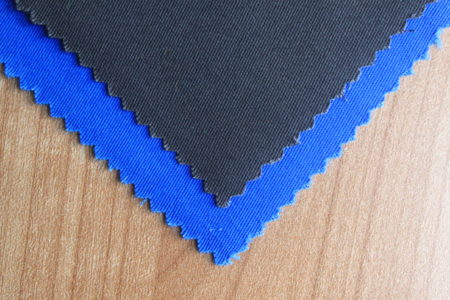


The property of the fiber is the basic factor which can determine the textile fabric performance. So the differet fabrics with different fibers have its own unique properties.
(1) The main feature of the cotton fiber are fine fineness, medium length, soft and natural convolution, good moisture absorption and heat retention property. The cotton fiber can be spun into the yarns with different thickness, can be thick yarn count(<18s),medium thick yarn count (19s~28s) and very thin yarn count(29~54s) . It can also achieve the “silk” effect after mixed with the base propely, the dyeing performance will be also better. So the cotton textile fabric has the advantages of soft, warm, absorbent, breathable, comfortable excellent wearability. The weakness is poor crease recovery.
(2) The main features of the wool fiber is a naturally curly, low initial modulus, small flexural rigidity, strong elastic recovery, low thermal conductivity; The first choice of natural fiber with good wet absorbtion will be wool, also has the good performance of wet scattering. The surface of the wool fiber has the flakes which makes the wool fabric has the property of feltability and soft gloss, the wool fiber has good dye affinity, so the wool fabric has very beautiful colors. The wool fabric has the character of Crisp and resilient, soft and more body, smooth and fullness, these are so called "sense of wool."
(3) The natural silk is long and thin and soft, smooth surface, flexible, strong moisture absorption, and has a gorgeous, elegant luster. The Silk has good dye affinity and better elasticity than cotton fiber, silk fabrics is not easy to wrinkle compared with cotton fabric. Thus the silk fabric has the characters of smooth, stiff, bright, good draping.
(4) The characteristics of fibrilia fiber are high strength, high rigidity, good moisture absorption and liberation. The disadvantage is small flexibility and elongation. The fibrilia fabric is stiff, breathable, easy to absorb sweat and discharged from the body rapidly.
(5) Chemical Fiber: there are many different types and it developed very quickly. Different varieties of fiber, fabric properties quite different. The more widely used are the following:
① Vviscose fibers: The nature of viscose fiber is near to the cotton, but poor strength than cotton, large elongation but small recoverability, low stiffness, soft, good moisture absorption, good ventilation, good dye affinity. Therefore, viscose fabric is soft, comfortable, bright color and good draping. The disadvantage is the lack of tightness, has the "floating" feeling. Easy to have crease and deformation, big shrinkage and poor dimensional stability.
② Polyester fiber: the polyester fiber has the characters of good strength, good flexibility, abrasion resistance, great initial modulus when stretching, great rigidity and good recoverability after deformation. The Polyester fabric is stiff and smooth, has good elasticity and dimensional stability, also has good fastness and excellent anti-wrinkle properties. The disadvantage is poor moisture absorption, easy to produce static electricity, easy to stain fabric, poor ventilation and stuffiness when wearing. But it is washable, quick drying, easy-care and have the reputation of "wash and wear".